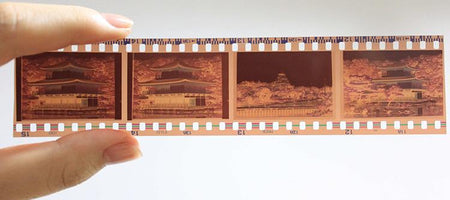The film and television industry is bigger than ever before and continues to produce millions of movie fanatics with each new blockbuster release and season premiere. It’s difficult to imagine that this industry was nonexistent before the nineteenth century, and now that almost everything is recorded with digital cameras and sound equipment, it’s easy to forget that all of the classic movies and television before the 1990s were recorded on film!
The history of film is interesting and each film format contributed to American and world culture in many ways. Let’s explore each of the most popular film gauges and learn what makes each of them unique.
16mm Film
16mm film was first produced as a cheaper alternative to 35mm film and was a substitute material for amateur filmmakers and photographers. The 16mm format was introduced to the market in 1923 by Kodak, and the brand is still producing the film gauge today. In fact, there are several television productions that are still recording with this film format.
16mm film reel lengths can differ, but they typically range from 50 to 800 feet. The 16mm format is half as long as the 35mm gauge, so 16mm reels can hold much more footage than a 35mm reel of the same length.
Most 16mm film reels are silent. However, some are made with SVA’s which appear as a yellow or rust-colored strip on the side of the reel. Plus, 16mm reels with sound only have sprockets on one side of the film instead of both sides like in silent films.
8mm Film
The 8mm film format was introduced by Kodak during the Great Depression in America as a cheaper format than the 16mm for making home movies. For most people, money was tight because of the stock market crash, and companies were looking to market products that were of decent quality, but also affordable.
The 8mm film gauge can hold approximately double the playback time of any 16mm reel of the same size. The smaller size of the 8mm reel makes it more compact and able to hold much more footage than previous formats.
The 8mm film format, like all film formats, was not originally created with the capabilities to record sound directly onto the film. It wasn’t until the 1960s that this capability came along, so there are many 8mm film reels today that may not have sound. You can tell if an 8mm film strip has sound by looking for the audio strip. On an 8mm film with audio, the audio strip will run along with the sprockets.
Super8 Film
The Super8 film format was released in the 1960s by the Kodak company and was intended to be an upgrade to the previous 8mm film gauge. Super8 film is still only 8mm in width, but it has smaller sprockets, allowing the exposed area in the center to be much larger than the traditional 8mm gauge. This created a much sharper image than previous film formats. The Super8 film gauge was created with audio recording capabilities as well with its oxide strip that can be magnetically recorded.
A Super8 film reel has the same length of an 8mm reel - about 400 feet maximum. This is a much shorter reel than the 35mm or 16mm gauges that came before the 8mm formats. The size of Super8 and 8mm film reels was much easier to handle, and the Super8 film format became one of the most widely used due to its size and the image quality produced.
These three film formats remained popular throughout the twentieth century and are still in use today. Although many of us use digital cameras in the modern age, there are still those who prefer the nostalgia of using film and have mastered the craft of developing film and making beautiful motion pictures and photography. It’s unclear if film will ever become truly obsolete, but one thing that’s certain is that its impact on history is undeniably massive. Without film, the film and television industry as we know it today would not exist. There’s a lot we can learn from and appreciate about this analog format.













